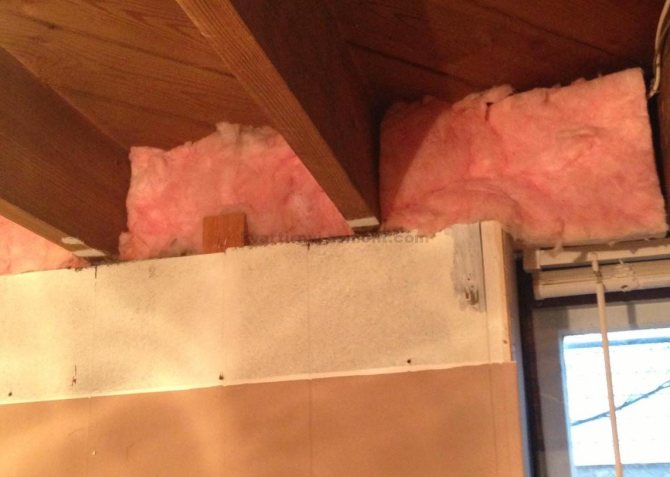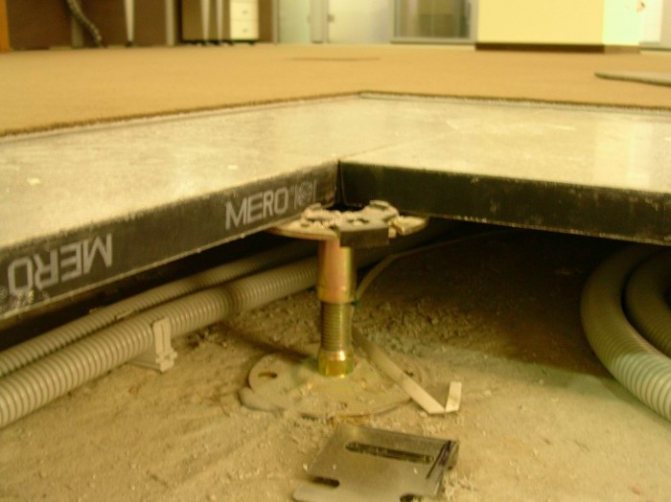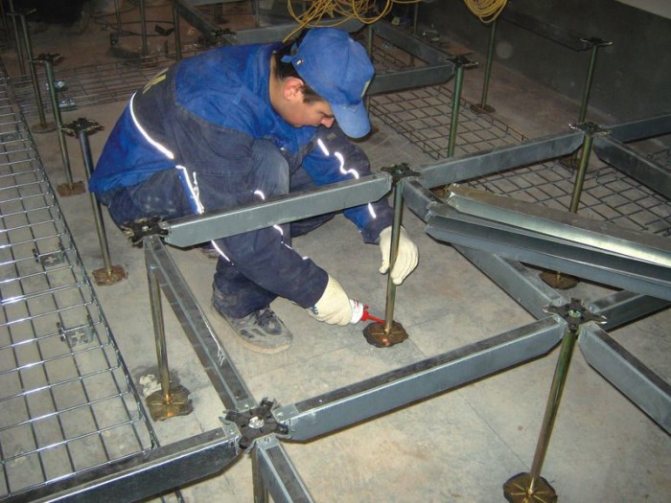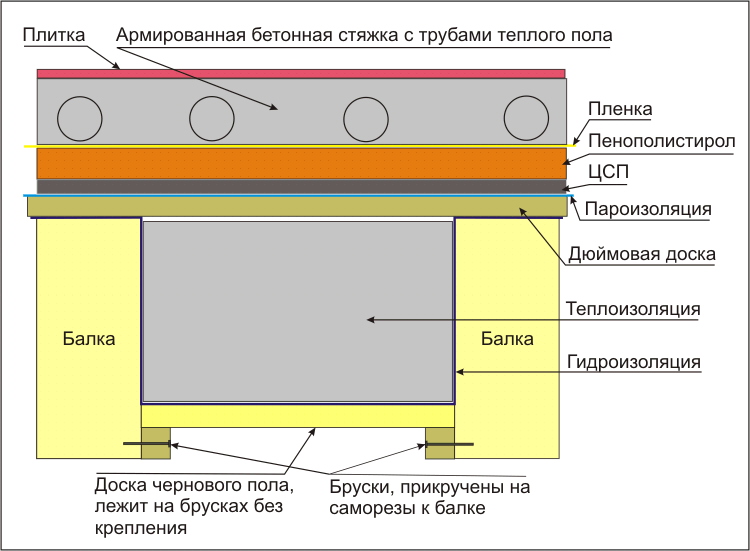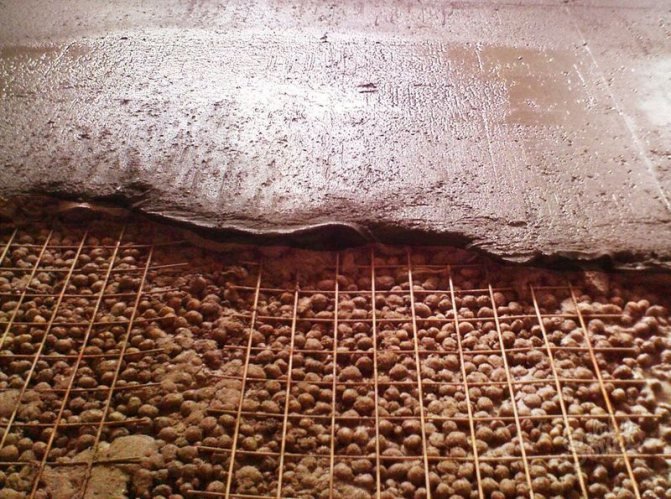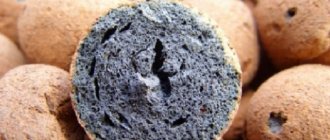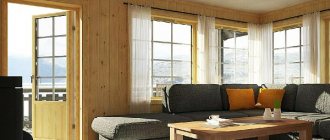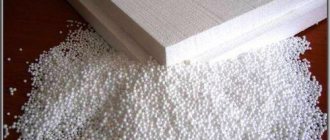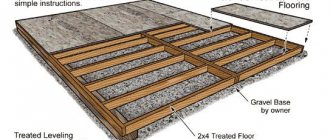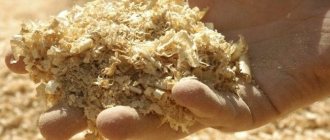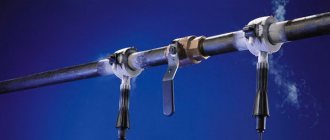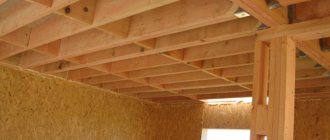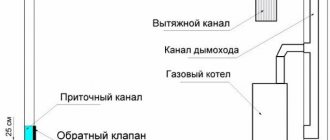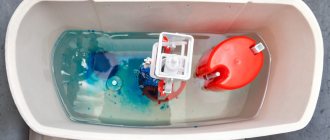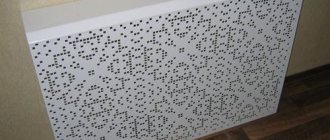Why is thermal insulation of the floor in wooden houses necessary?
A floor with illiterate thermal insulation does not retain heat, even if the house is built of solid wood. Installing a reliable heating system will not save the day. In the cold season, the temperature of the ground under the building decreases. With weak ground-based thermal insulation of the area under the house, the bottom of the walls and corners will certainly freeze.
It is necessary to install thermal insulation during the construction of the house, before installing the flooring. This will help save time, money and construction materials.
Insulating the floor in a wooden house will help prevent:
- Large daily temperature fluctuations during the heating season.
- Premature wear of the wooden parts of the structure.
Insulate the floor if there is a basement or basement under the house. The building erected on piles also needs to be insulated. Insulated attic floors and overlapping of the second floor will save the wooden house from rapid cooling.
The procedure for warming the floor of a private building
The list of the main recommended measures, in principle, is the same, regardless of the type of overlap, material of the finished floor and floor. The difference is only in the nuances that should be taken into account when choosing and installing thermal insulation.
Inspection of the base
This must be done at least in order to determine what of the materials and in what quantity will be needed to eliminate defects. Moreover, the skirting boards are unambiguously dismantled.
Sealing all cracks
There are several options, since the re-laying of the boards is already a partial removal of the old floor.
- Polyurethane foam. But only for large gaps. Although this is not the cheapest way to seal them, except perhaps along the perimeter of the room.
- Roofing material or polyethylene film. If it is planned to lay a slab (sheet) insulation, characterized by the correct geometry, then a sand bed is made for additional leveling of the base.
- Plywood. In fact, a kind of the so-called dry screed. Sheets are sewn onto the old wooden flooring with their own hands pretty quickly.
Floor vapor barrier
Fastening the material with nails is a big mistake. Only with staples, using a construction stapler. The vapor barrier is installed over the entire area of the room, with a slight curl on the walls.
Insulation installation
Since the old floor is wooden, the work is not difficult. The manufacturer always recommends how to fix individual samples of insulation. For foam - special dowels, mineral wool - nails with a large head.
On a note!
Before working with insulation, you need to take into account that for soft (or loose) materials, you will have to mount another crate, and already between its ribs, lay fragments of thermal insulation. If polystyrene is used, then it is covered from above with chipboard, OSV or similar plates (sheets).

Arrangement of waterproofing
If this is neglected, then the result of wet cleaning in the room will be leaks. Moisture through the flooring will go down - to the insulation and the boards of the old floor. The consequences are known - rot, destruction of wood and the need for unscheduled repairs.


Useful Tips
- If a laminate is chosen for the topcoat, then for additional insulation of the floor, it is enough to use rolled foam with a reflective layer (foil) as a substrate. When deciding to decorate a room with linoleum, one should focus on the insulated modification of this product. It is more expensive, but the process of thermal insulation is greatly simplified.
- To optimize costs, you should familiarize yourself in detail with the characteristics of all heaters, in accordance with the principle of sufficiency. The main thing is that in this room it turns out to achieve a significant reduction in heat loss. If it is difficult to make engineering calculations on your own, it makes sense to invite a specialist. It is better to pay than choose the wrong insulation and make a mistake with its parameters (thickness, density).
There is enough information on the methods of floor insulation in a private house and recommendations on the choice of materials. The decision is yours, reader.
The choice of thermal insulation material
Before starting work, you will have to decide which of the materials on the market is best suited for thermal insulation of a floor in a wooden structure.
The choice of raw materials often determines the cost, but if you save on thermal insulation, you will have to spend money on heating your home. The heating method does not matter.
What to consider:
- drops in air temperature and humidity in the room;
- the expected load on the floor slab;
- the thickness of the insulation to be used.
Loose heaters, mats, canvases and slabs are suitable for insulating wooden floors on logs. The wooden floor and the thermal insulation used must "breathe".
Moisture-resistant solid insulation is used for concrete floors. Polyurethane foam, polystyrene foam and polystyrene foam are very toxic during combustion, they are often used under concrete. You can combine materials.
The choice of thermal insulation materials for the first floors
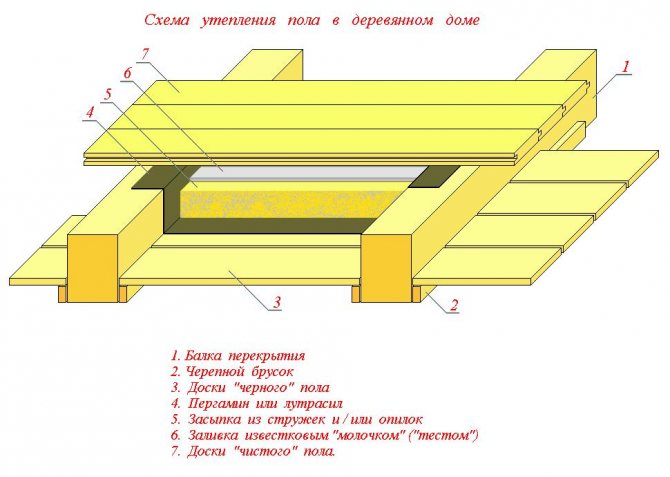

Floor insulation scheme for a wooden house.
The choice of floor insulation depends on the characteristics of each individual room. As a rule, mineral wool, penoplex, polyurethane foam, polystyrene foam, polystyrene foam, ecowool are used. You can use cheaper bulk materials: expanded clay and sawdust, but they are inferior in terms of technological indicators to more modern coatings.
Penoplex and polyurethane foam insulation is a relatively expensive method of providing heat in a wooden house. Penoplex itself has a high cost, and polyurethane foam is blown onto the floor surface using special equipment, which also increases the cost of such work.
Ecowool is an inexpensive material with a free-flowing consistency. This insulation requires special installation hardware, like polyurethane foam. The advantages of blown materials include the absence of seams on the surface of the insulation and waste (scraps) of the flooring.
Expanded polystyrene also refers to expensive cold floor insulation. It is used for the first floor from the ground in a wooden house, as well as for installing floors with an electric heating system. The main thermal insulation advantages of expanded polystyrene include:
- low water absorption capacity - does not accumulate moisture;
- strength, maintaining a stable shape and volume under the influence of the environment;
- high resistance to the biological effects of microorganisms, which is important for the floor in a house made of wood;
- low vapor permeability;
- durability and ease of installation;
- ecological cleanliness.


Thermal insulation diagram for a concrete floor.
Penoplex is made from ordinary foam by extrusion. The material of the new generation has a number of indisputable advantages, which are important for insulating a floor close to the ground in a wooden log house. The advantages of penoplex include:
- minimum thermal conductivity - protection of the floor from freezing;
- high strength and durability;
- low degree of moisture absorption;
- ease of installation and durability;
- affordability.
Among the disadvantages of floor surface insulation with penoplex, the following should be noted:
- when heated to high temperatures, it deforms and loses most of its qualities;
- can be exposed to the invasion of rodents, which is unacceptable in a wooden structure.
Of cheap and generally available materials that can insulate the floor of the lower floor, foam is included. It has the same properties as other insulating coatings. Its significant disadvantage is its ability to burn, with the release of acrid smoke, which is unacceptable in a house made of wood.
Popular types of insulation materials
The construction market offers a huge selection of thermal insulation materials. The range will satisfy the most demanding builder. But remember that quality doesn't always translate into price.
When choosing a heater, proceed from the structural features of the building and the climatic conditions of the area.
Considered in demand:
- sawdust;
- expanded clay;
- mineral wool;
- ecowool;
- isolone;
- penofol;
- fibrolite.
The value for money of these raw materials has made them popular with home builders. The possibility of self-assembly when insulating, increases the demand for them.
Thermal insulation with sawdust
Ordinary sawdust is not inferior to the current insulation. The sawdust will help minimize heat leakage and prevent walls from freezing.
This junk material is free to get your hands on. The availability of sawdust is their main advantage.
Positive traits:
- Sawdust - natural, harmless to humans.
- This material can be obtained free of charge.
- Low degree of thermal conductivity.
Disadvantages of sawdust:
- Highly flammable material.
- Shrinkage and shrinkage.
- Good hygroscopicity.
- Sawdust is the home of rodents, insects, mold and fungi.
Insulating briquettes are prepared on the basis of sawdust. In proportions 1: 1, sawdust is mixed with clay, diluted with water. From the resulting mass, briquettes of the required size are formed and used for insulation.
Thermal insulation with expanded clay
Expanded clay is a natural, environmentally friendly material. Lightweight, porous, resistant to temperature changes. Round granules - fired clay, mixed with the addition of shavings or peat. Sorted by fractions.
Pros:
- cheapness;
- environmental friendliness;
- chemical resistance;
- the weight;
- thermal conductivity;
- long service life.
Minuses:
- ineffective in small quantities;
- high degree of hygroscopicity.
Good results are obtained by mixing two fractions of the material. This makes the backfill denser, which contributes to a decrease in thermal conductivity and sound insulation.
Thermal insulation with mineral wool
Popular insulation. It is used for floor, roof and wall insulation. Excellent raw material for heat and sound insulation.
Types of mineral wool:
- glass wool;
- basalt wool;
- slag.
Positive qualities of mineral wool:
- noise absorption;
- availability;
- resistance to chemical attack;
- moisture resistance;
- heat resistance.
Mineral wool contains toxic formaldehyde resins that can have harmful effects on the human body.
It is recommended to use cotton wool where it is possible to exclude its contact with the external environment.
Thermal insulation with ecowool
Ecowool - shredded waste paper mixed with boron and boric acid salts. Salts prevent harmful microflora from appearing in the insulation. Boron makes ecowool less flammable.
The ratio of substances in the insulation:
- waste paper 80%;
- boric acid salts - 20%.
The insulation "breathes" - it provides air circulation, and does not retain moisture, it keeps heat well.
Avoid dense stacking when installing horizontally. After filling the cotton wool between the floor logs, it is loosened and leveled, a thickness of 20-25 cm is considered sufficient.
Insulation with isolon
Izolon - foil-coated bubble polyethylene. Foil on one and two sides. The foam structure provides low thermal conductivity. Foil contributes to high moisture resistance and heat-saving ability.
On sale it is found in rolls and sheets.Izolon sheet is produced with a thickness of 15 mm.
Izolon comes in three varieties:
- one-sided foil;
- double-sided foil;
- one-sided foil with adhesive surface.
Low rate of heat loss, provided by the presence of foil - due to its reflectivity. The environmental friendliness of the isolon allows its use in any premises.
Izolon is a good sound insulator. It is inferior in thickness to many other insulating materials, but this does not make it less in demand. It does not absorb moisture and does not rot.
Penofol insulation
Penofol is a modern foil-clad material consisting of several polyethylene interlayers with different thickness, density and porosity. It is produced on the basis of polyethylene foam.
Penofol is produced in the following varieties:
- one-sided foil;
- double-sided foil;
- one-sided foil with an adhesive base;
- one-sided foil with laminated film;
- aerated.
Penofol is resistant to humidity and high temperature drops, combustion. These qualities make it possible to use it in private housing construction. The topcoat can be laminate, carpet, linoleum.
With a thickness of several millimeters, it reflects about 95% of the heat energy. This is one of the best indicators among insulation materials.
Fiberboard insulation
A versatile material that is used for floor insulation, as well as wall formwork in concrete frame construction. All this speaks in favor of this heat-insulating material.
The boards are made of "wood wool" - thin, dense, ribbon-like wood chips, up to 50 cm long. The production technology is simple. The molds are filled with packing shavings and spilled with Portland cement mixed with mineralizing substances. This technology makes the structure of the slab quite strong.
Fiberboard insulation is appreciated for:
- high performance properties;
- reliability;
- ease of installation;
- low price.
This insulation is easy to install yourself. Plates can be used to insulate the sub-floor. The gaps are filled with polyurethane foam.
Pros and cons of different heaters


First, we should talk about mineral wool, which has been used as insulation since time immemorial. Working with it used to be difficult, so people preferred to use the services of craftsmen.
Now manufacturers sell it in the form of pressed panels, which simplifies installation, however, the only drawback remains the same.
Of course, this applies to temperature fluctuations, which create a potential danger of deterioration of the thermal insulation layer.


Secondly, fiberglass is the next generation after mineral wool in the form of comfortable panels. It is used much more often, laying under the flooring between the joists.
Nevertheless, it must be taken into account that temperature drops will also spoil the mood of a person who will change panels next year.
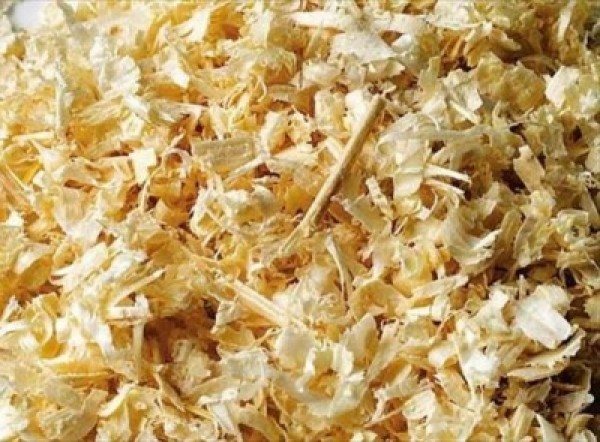

Thirdly, from time immemorial, dry sawdust was also used in private houses. Along with chipboard, they retain heat well, saving a person from unnecessary losses.
It is important to note that this insulation is not afraid of temperature changes, therefore it is excellent even for poor climatic conditions. Only immediately you need to prepare excellent steam and waterproofing.
It must exclude even the slightest penetration of moisture, otherwise, the sawdust will quickly become covered with fungus and begin to rot.
In principle, the work is carried out much faster and easier.Foam plastics are the best heaters for a wooden house, they are made in a wide range. As a result, a person freely selects the necessary thickness and grain size to keep the room warm.
The most common option is 50 millimeters thick. In the European part, such insulation is sufficient, and working with it does not require special knowledge.
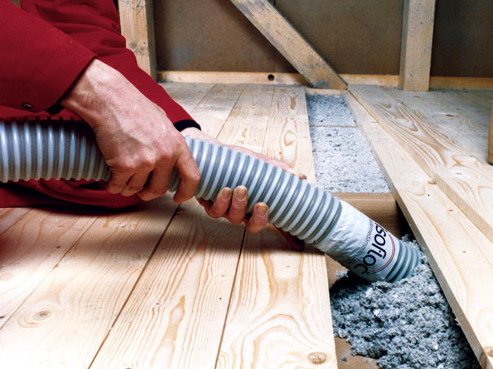

Fifthly, liquid mixtures based on expanded clay. Some experts also advise using expanded clay mixtures, but their use is very limited.
The fact is that after laying it, the load on the supporting structures increases sharply. For this reason, additional weight must be taken into account in advance.
It turns out that there are clear leaders in terms of performance, however, in some cases, the owner of the house should take into account the monetary costs. They also leave a mark on the choice, so you can't just buy the necessary insulation, forgetting about your own family budget.
Calculation of the thickness of the insulation
Before proceeding with floor insulation and the choice of insulation, it is important to get acquainted with the method for calculating the thickness of the insulation layer. This is an important point in the construction phase.
Calculations take into account:
- structural features of the building;
- regional weather conditions;
- heat supply conditions of the building;
- type of insulation and its thermal conductivity coefficient.
The result will be a minimum performance requirement for a material that is recommended for use in the region as insulation.
Multiplying the coefficient of thermal conductivity of the insulation material by the thermal resistance of the structure, we get the thickness of the insulation. The required values can be found in SNIPs and instructions for heaters.
A variety of modern insulation
Fiber insulation
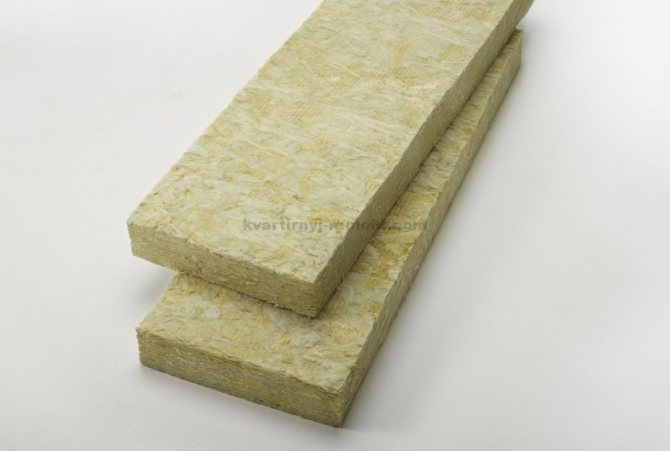

Fiberglass and mineral wool are excellent heat insulators, good sound insulators. Laying the fiber between the laths is very tight. The spacing should be made smaller than the width of the roll of material. The disadvantages of the material include low vapor permeability and low mechanical strength. Also, glass wool fibers are subject to shrinkage, and it is unsafe to work with it. Mineral wool is safe, does not shrink, but outperforms fiberglass. Mineral wool is laid with the marking upwards, that is, with the denser side. In this case, vapor barrier is not required.
Organic insulation
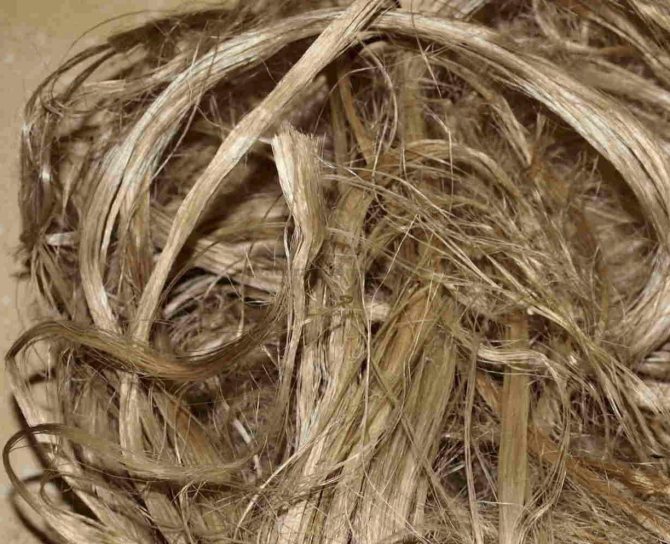

Linen or jute fiber, very similar in properties to mineral wool. The fibers are easy to work with and safe. They are afraid of moisture getting to the surface, as the decay process may begin.
Polyurethane foam


Can be used as a final finish. It is applied by spraying. Quite high price, adequate to quality indicators. Such a coating will have low thermal conductivity, low water absorption, and environmental friendliness. Stability in its structure and shape, durability. Quality material must be dry and free from harmful volatile impurities.
With foam


Polyfoam is a dense material that reflects infrared rays well. Environmentally friendly and inexpensive. The only drawback is the instability to environmental influences. In closed rooms, the foam does not wear out and does not lose its qualities.
Bulk insulation
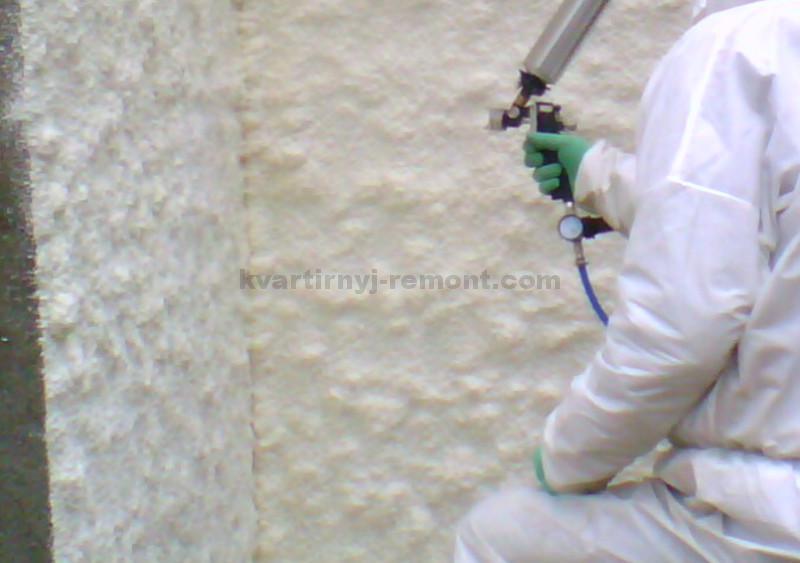

Easy to install. On the bulk insulation, you can make a flooring finish. Not very economical in terms of cost.
Cork floor: types, pros and cons
Foam concrete and aerated concrete, granuloconcrete


Remains after construction can be used as insulation. These types are highly resistant to heat retention. Granuloben is affordable and has high qualities of a heat insulator. Its composition is sand, cement and pieces of foam.
The order of work
The process of floor insulation is simple.All installation work can be done independently.
Main steps:
- Sub-flooring.
- Laying insulation material.
- Laying a moisture-proof layer.
- Floor covering.
Subfloor is the basis for insulation. This is a frame that holds the insulation material in close proximity to the floor. Such a floor does not carry any load. For its construction, they use: non-planed boards, bars, formwork material. The tree is impregnated with an antiseptic.
We put the selected insulation on the rough floor. For dense filling of the space, polyurethane foam is used. As a heater for the subfloor, it is possible to recommend a bedding made of expanded clay of a medium fraction.
Place a moisture-proof material on top of the insulation: polyethylene films, roofing felt, glassine. This will protect the insulation from moisture penetration and condensation.
A floor of boards is laid on top of the moisture-proof material. On top of the boards: a layer of soundproofing material, slabs, carpet or linoleum.
Features of floor insulation without logs
In the absence of a lag, an additional screed is poured onto the floor surface. It will level the surface and remove all possible irregularities.


- We are laying waterproofing. Choosing affordable and economical products. We focus on reliability and ease of use. Traditional roofing felt and roofing felt, bitumen-containing roll materials are suitable.
- Fill in a layer of medium fraction expanded clay. Thermal insulation can be carried out using expanded perlite or vermiculite. A thin layer of such materials will also create good sound insulation. Vermeculite can also have a leaf form of release. Agloporite is not a very economical option. Environmentally friendly material is sawdust. They are hygroscopic, superior to expanded clay in terms of thermal insulation quality, non-flammable and prevent decay. Treated with a special composition with an antiseptic, even at high humidity, such a filler will remain dry. Industrial slag is the cheapest thermal insulation material. There are certain requirements for the content of ash and coal in waste, for their subsequent use as a heat insulator.
- Above - an additional layer of roll waterproofing. Using the slats, we set the height of the insulation layer. In a small room, it will be enough to arrange the slats only around the perimeter of the room.
Features of the first floor thermal insulation
The floor of the first floor has direct contact with the ground, if there are no piles, an ordinary or screw cellar, a basement floor, underground premises (a feature of the lower floors). This requires additional measures to insulate the building.
The sequence of measures for insulation on the ground:
- Dismantle the old floor.
- Level the soil.
- Spread a layer of expanded clay 20-25 cm high.
- Spread a layer of coarse sand 5-7 cm.
- Make a concrete screed.
- Waterproofing concrete.
- Lay a layer of insulation.
- Flooring of floors.
This sequence of works on insulation is the most effective. The floor installed in this way will be warm and the house will be cozy.
Floor insulation in a house with a basement or basement has its own specifics. The material and organization of the insulation work depend on the purpose of the underground premises.
Types of heaters
The beginning of work is associated with the selection of insulation. It is he who influences important factors, therefore, the characteristics of each of them should be considered.
When choosing the required material, pay attention to the ability to absorb noise, water, vapor permeability.
Floor insulation dry sawdust is the oldest way. It is a cheap natural material. In the process of work, such material is easily filled up even in inaccessible areas. Environmentally friendly, can be used in the form of various modifications: wood blocks, sawdust pellets, sawdust concrete, wood concrete.All types have excellent noise and thermal insulation, good durability. However, all sawdust-based materials have a significant drawback - they easily absorb moisture, which leads to the appearance of fungus and mold. Therefore, when choosing this type, you need to take additional care of hydro and vapor barrier.
Mineral wool - one of the most popular and available materials. The assortment includes three types: stone, slag and glass. The main advantage is perfect fire resistance. They have a high level of resistance to chemical and biological factors, perfectly isolate noise and sounds, retain heat. However, mineral wool is unstable to the effects of water and steam, and is rather fragile. During installation, think about good vapor barrier. It should be noted that it is unsafe for human health. It is unprofitable to use it in damp rooms.


The manufacturer produces mineral wool in the form solid slab or soft mat... A solid board is often used to insulate a wooden floor. The blue side is stronger. During installation, this mark should be on top. Soft mineral wool is designed for sound and heat insulation, has a wide range of uses in construction.
Expanded polystyrene (styrofoam) - a popular and versatile floor insulation. According to some characteristics, in particular, heat preservation, it is 25 times more effective for expanded clay concrete. The result will be a pleasant surprise, since the foam has the ability to slowly absorb heat, does not allow steam to pass through, has high strength and is resistant to external factors of a chemical and biological nature. Such qualities are provided by the unusual structure of the foam, which can create comfort for a long period. However, this material is not universal and, in addition to its advantages, has some disadvantages. Expanded polystyrene is sensitive to moisture, therefore, before insulation, it is worth waterproofing the surface.
- Cork floors: the pros and cons of the coating;
- How to properly store firewood on the site? We give recommendations for storing firewood;
- Ways to insulate the ceiling and walls in the bath:.
Penofol - a new invention in the world of insulation technologies. It is made in rolls, one side is covered with a special foil that reflects the light, and the other is a heater. The advantages of the material are high density, resistance to mechanical stress. Such insulation for different types of insulation (from water, steam, heat) can be used as a main or additional layer.
Ecowool - another relatively new insulation. This is the result of recycling waste paper and special natural additives, it is absolutely environmentally friendly for use in everyday life. Ecowool does not burn, is able to restore its qualities after drying, and has low thermal conductivity. However, the cost of such insulation is much higher than others.
A more affordable option is isolon, which takes into account all the factors necessary for thermal insulation. Such a material is thin and has a low level of thermal conductivity. For example, the thermal conductivity of a brick wall will be equal to an isolon 10 millimeters thick. Resistant to moisture, does not rot, effectively protects against hydraulic effects. Additionally, izolon will provide good sound insulation. The ergonomics of such a material is that it allows you to minimize the loss of space when insulating the floor.
Expanded clay will pleasantly surprise economical owners, since the price of the material is low and affordable. Moreover, this in no way affects the quality of the material, which provides good thermal insulation in the most severe climatic conditions. However, its installation requires a fairly high layer (10-15 cm), which is not always practical in small rooms.
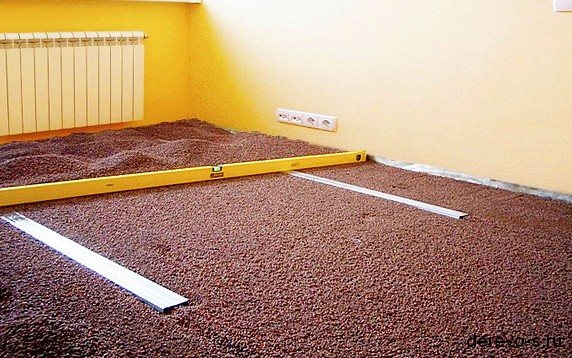

Polyurethane foam created as a result of the processing of two chemicals. If you make adjustments to the production process, you can get either hard or soft material. Its structure has pores, which contain insulating air and gas, which lowers the thermal conductivity. This fact makes polyurethane foam the best thermal insulation material. It is resistant to external factors, moisture, versatile during installation, absolutely precisely takes the desired shape.
Features of thermal insulation of the second floor
Insulating the floor of the second floor of a wooden house means creating an insulating layer of a traditional structure. The differences in the insulation "pie" may be in the material, which is selected depending on the specific situation.
The order of work and structure of the overlap:
- Overlapping from a bar - a crate.
- Vapor barrier layer.
- Thermal insulation layer.
- Vapor barrier layer.
- Finishing floor with floor covering.
Any heat insulator loses some of its qualities due to getting wet. When insulating the floor of the second floor, it is necessary to pay attention to the upper vapor barrier layer. The moisture should be able to evaporate and not accumulate there.
This is an important condition for the correct operation of the thermal insulation layer of the second floor.
What's the best material?
It should be said right away that there is no single correct answer to this question. Today there is a huge variety of super modern materials that will help to carry out floor insulation. Of course, the choice is yours, because all the options offered differ not only in their appearance, quality characteristics, but also in cost, respectively. Experts in the field of construction strongly do not recommend saving on floor insulation, which is why in this article we will consider all the selection criteria, installation features, as well as the ability to make the entire range of work as budgetary as possible.




Warm floor - a guarantee of comfort and coziness


What should be the ideal insulation? At a minimum, it must meet the following criteria:
- Security. The best material for insulation work is the one that is environmentally friendly. Since it will constantly succumb to mechanical and climatic influences, it is important that during operation it does not emit any toxic substances.
- Simplicity and ease of installation. As a rule, construction work related to floor insulation can take from one to three days, depending on the material you choose.
- Resistant to moisture and temperature extremes.
- Fire resistant. This criterion is especially important if we are not talking about residential premises, but about floor insulation at industrial enterprises and facilities.


Mineral wool in insulation works
Expert advice and examples of successful designs
Tips on the main issues of installing heaters are as follows:
- You should not skimp on the quality of the insulation.
- When installing insulation material, take into account the nature of the structure and the quality of the insulation.
- Use the amount of insulation according to preliminary calculations.
- Distribute the insulation tightly, evenly, without gaps.
- It is imperative to install a waterproofing layer.
- A thoughtful combination of insulation will increase the quality of the work performed.
It is not difficult to insulate the floor in a wooden house. This work is done independently. The main thing is to take a responsible approach to the choice of insulating material and step by step follow a certain order of work.
Where to begin?
The process of warming should be approached reasonably and thoroughly. In this case, it is necessary to take into account the number of floors of the house, the location of the house, the presence of a basement and a basement. The order of further work depends on this. The presence of a basement significantly affects the warmth of the entire house.In winter, the soil freezes over a fairly deep distance, which causes a loss of heat in the house. External basement insulation can limit the effects of cold earth and ice on temperature. This will significantly increase the efficiency of floor insulation inside a private house.
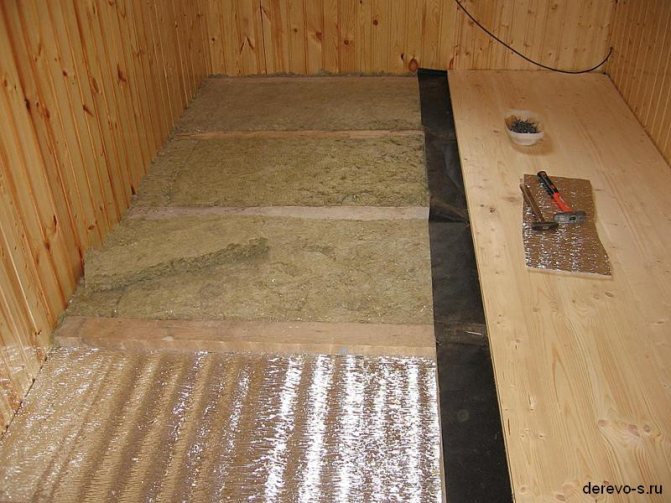

Consider the type of floor: concrete or wood. Based on this, different technologies are used.
Before starting work, you should calculate the desired thickness of the insulation layer, having previously selected the insulation and take into account the location of the building, as well as climatic conditions.
Insulation technology wooden floor on logs involves 3 stages:
- heat insulation;
- isolation of a pair;
- directly the flooring.
Glass wool, mineral fibers, sawdust, wood concrete, expanded clay are ideal for a wooden floor. The use of foam is ineffective: it does not allow steam to pass through due to its structure.
Following these steps, you can compose algorithm of upcoming works:
- installation of logs made of wood;
- laying the base (boards or shields) for future insulation;
- tight installation of insulation between the logs, the empty space is covered with a sealant or polyurethane foam;
- installation of a vapor-protective material on the insulation. This styling is attached to the logs, the joints and gaps are sealed with special tape;
- the final stage is the installation of wooden flooring and finishing.
Ecowool can be installed in two ways:
- manual (using lag mounting);
- mechanical: with the help of special blowing machines, the insulation is applied to the surface. A dry mechanical method is used to cover the floor, and a wet method is used for walls.
Concrete floor can be insulated with foam (at least 10 cm), since the characteristics are suitable for long and reliable operation.
For climates with severe winters (about -20 ° C), the thickness of the insulation layer should be at least 15 cm.
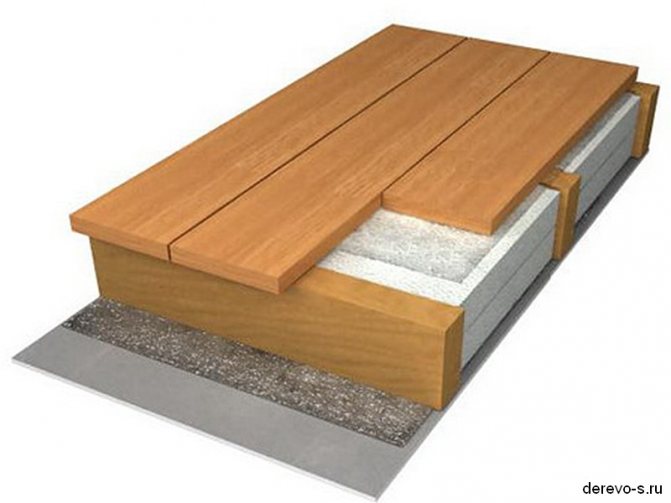

The styling is divided into several stages:
- a perfectly dry concrete surface is covered with plastic wrap;
- foam plates are stacked on top and covered with foil again;
- concrete screed, at least 0.5 cm thick;
- when the screed hardens, feel free to start laying the flooring.
Double floors
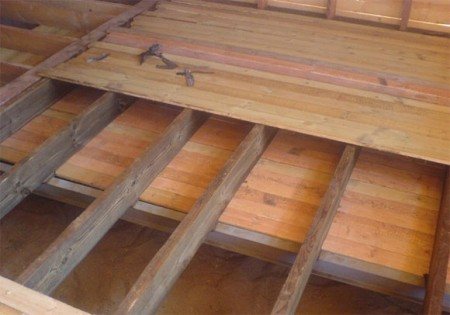

This term does not mean anything daunting - there is simply a technology for insulating wooden floors using an additional substrate. The essence of the process of arranging double floors - after laying all layers, immediately before the finishing stage of work, the subfloor should be laid. You can use unedged material (boards) for this, or you can make a substrate from fiberboards.
Care must be taken to ensure that the boards or slabs fit snugly against each other, there should not even be small gaps between them. If it is impossible to perfectly combine the fragments of the material (this mainly applies to unedged boards - it rarely has clear shapes), then the resulting cracks are sealed with putty.
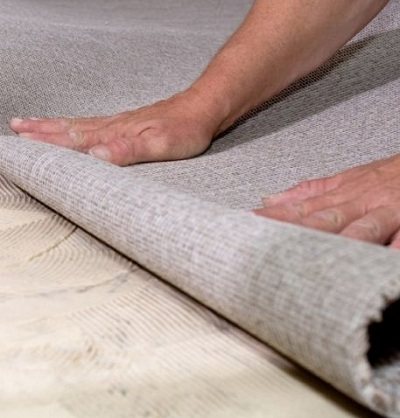

Do-it-yourself insulation of wooden floors is quite easy and simple to perform. But after this work, you will personally feel the warmth and comfort in the house - the absence of drafts directly affects the comfort in the premises. Some people use ordinary carpet to insulate wooden floors - a special soft backing is laid directly on the existing floor covering, carpet is glued to it or fastened with small nails on top. In principle, such a solution will give a result - the floor will really become warmer. But the best solution to the problem of cold wooden floors with your own hands is the use of professional thermal insulation materials.
(53 voice., middle: 4,80 out of 5)
DIY laminate repair
How to glue fiberglass: expert recommendations
Similar posts
Linoleum - a quick and convenient option for floor insulation
For those who do not like to strain too much or the conditions do not allow implementing more complex solutions, linoleum coating is the most optimal way to insulate the floor. Of course, this is a temporary measure, but effective. You will need to buy linoleum first. But not simple, but special, with an additional layer of thermal insulation. After the wooden floors are covered with linoleum, you will also need to put carpet on top of it. Such protection from the cold will give quite noticeable and positive results - it will immediately become warmer in the house.

